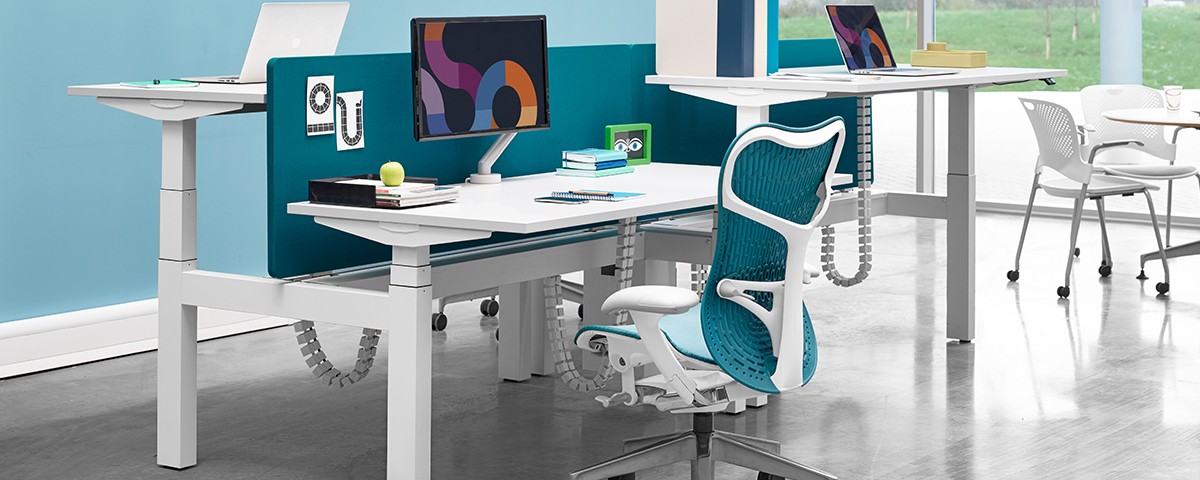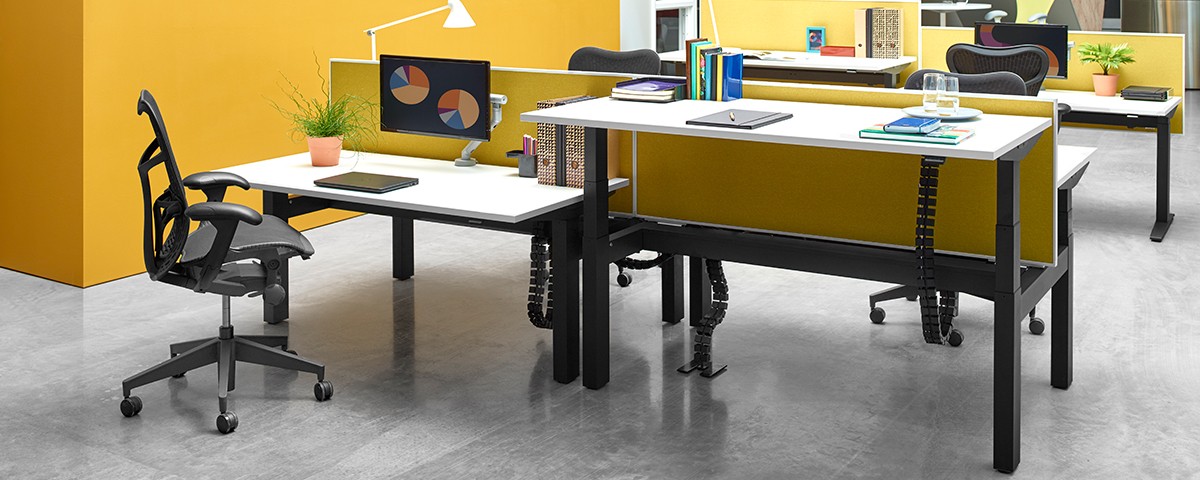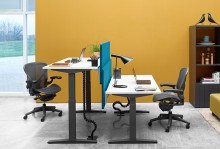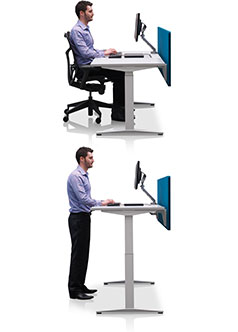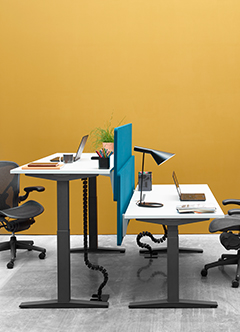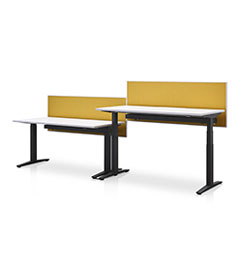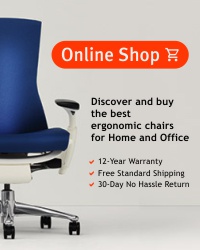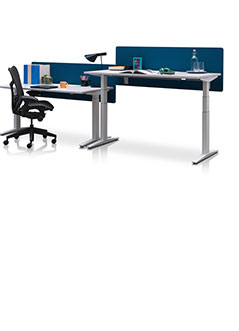
Product Story
Research shows that moving from one posture to another is beneficial to our health-people who move more, feel better. And people who feel better, work better.
The Ratio height-adjustable desk enables a smooth transition between sitting and standing. Users can vary their posture as they need to find the right balance between sitting and standing throughout the day. Ratio can be specified as single desks or in unlimited clusters, working with our other desking solutions to complete any floor plate.
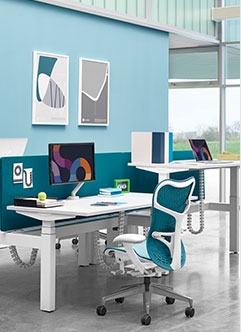
A Dynamic Work Environment
Ratio works seamlessly with our other products, from other desking and storage systems to task chairs and complementary side tables, to create a dynamic work environment where movement throughout the day is intuitive.
Ratio`s design ensures that ergonomic tools such as Flo monitor arms are fully supported. This enables the user to easily modify the position of one or more screens when adjusting their own posture.
Design story:
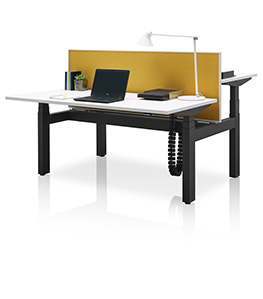
Design Heritage: A Story Continued
Herman Miller has always believed in the importance of supporting a variety of postures and encouraging healthy movement while you work. An alternative to sitting down at the desk is woven into our design history. In the 1960`s both Robert Propst and George Nelson pioneered the concept of alternative working positions.
Propst, the creator of Action Office, the world`s first open-plan office system, designed a hybrid of a stool and chair he termed a `perch`. Nelson, who was appointed Design Director in 1947, enjoyed standing around at work and thought others might also, designed a stand-up, roll top desk for the Action Office line. Both designers recognised the benefits of standing whilst working, long before the term `ergonomics` was widely known or understood.

